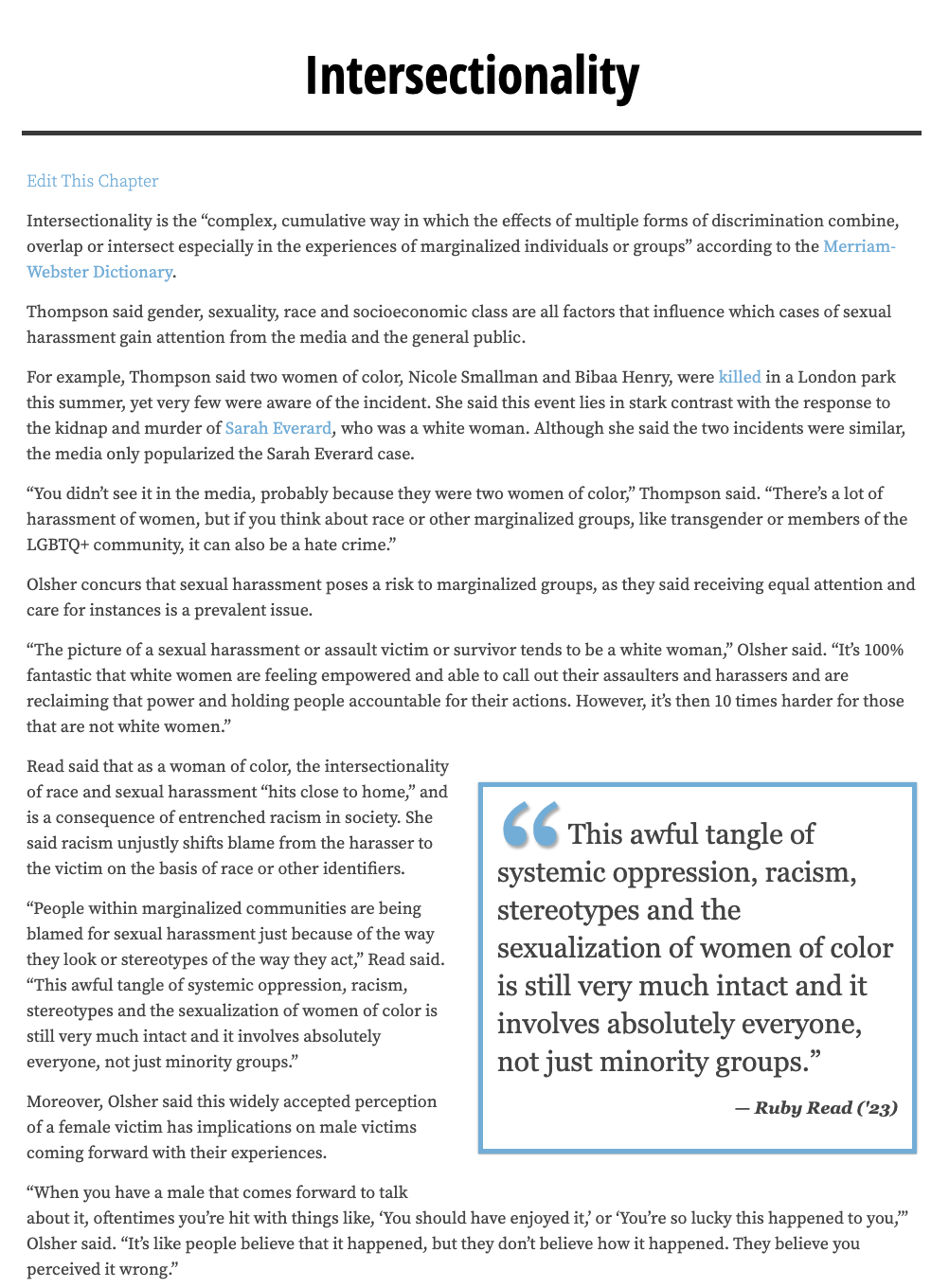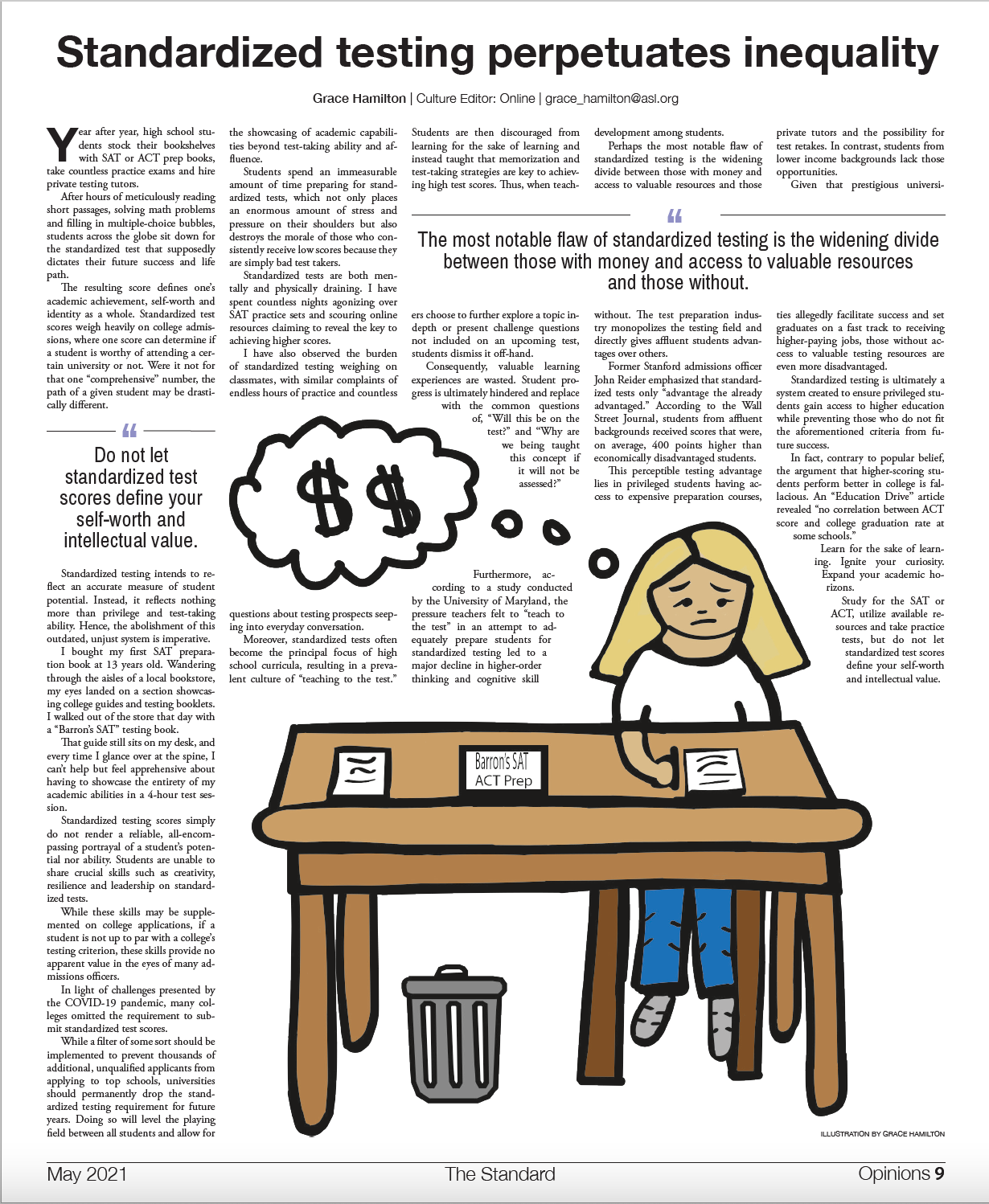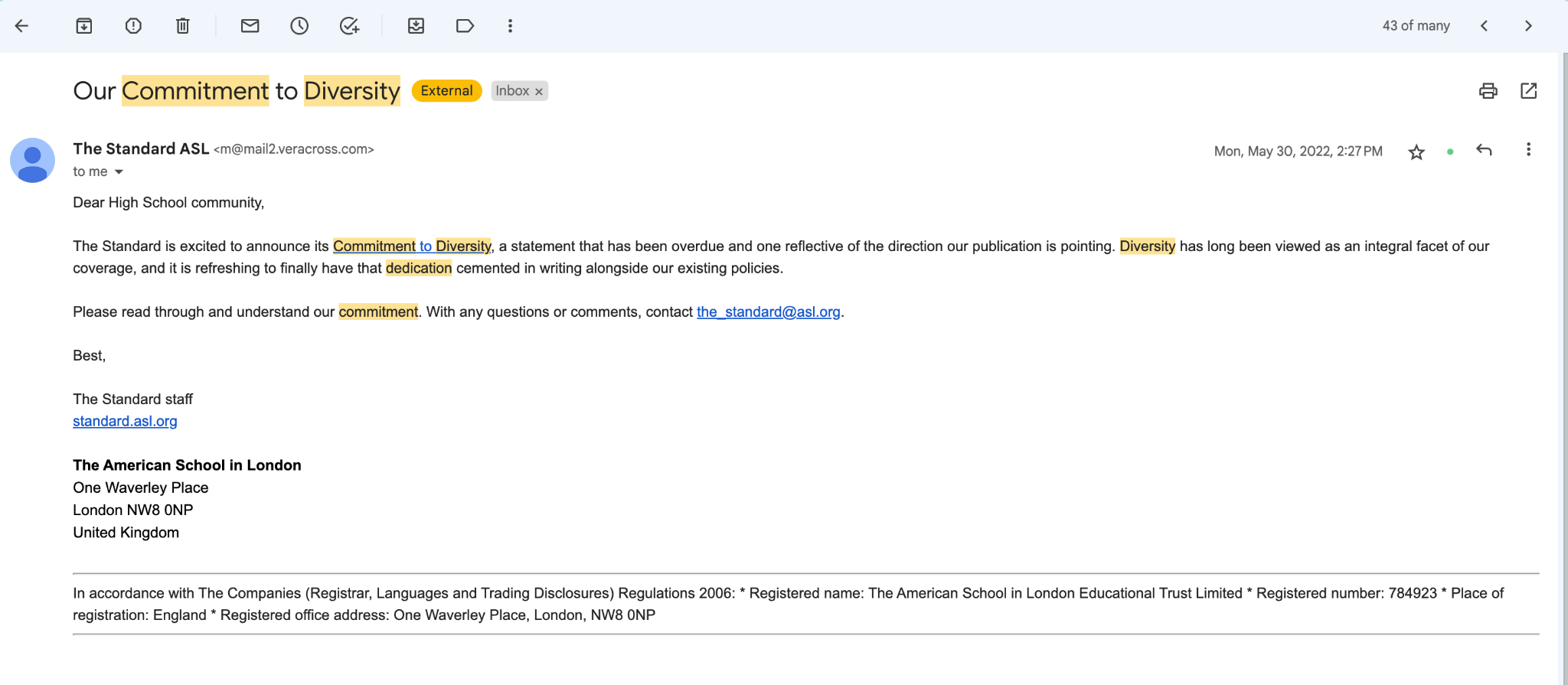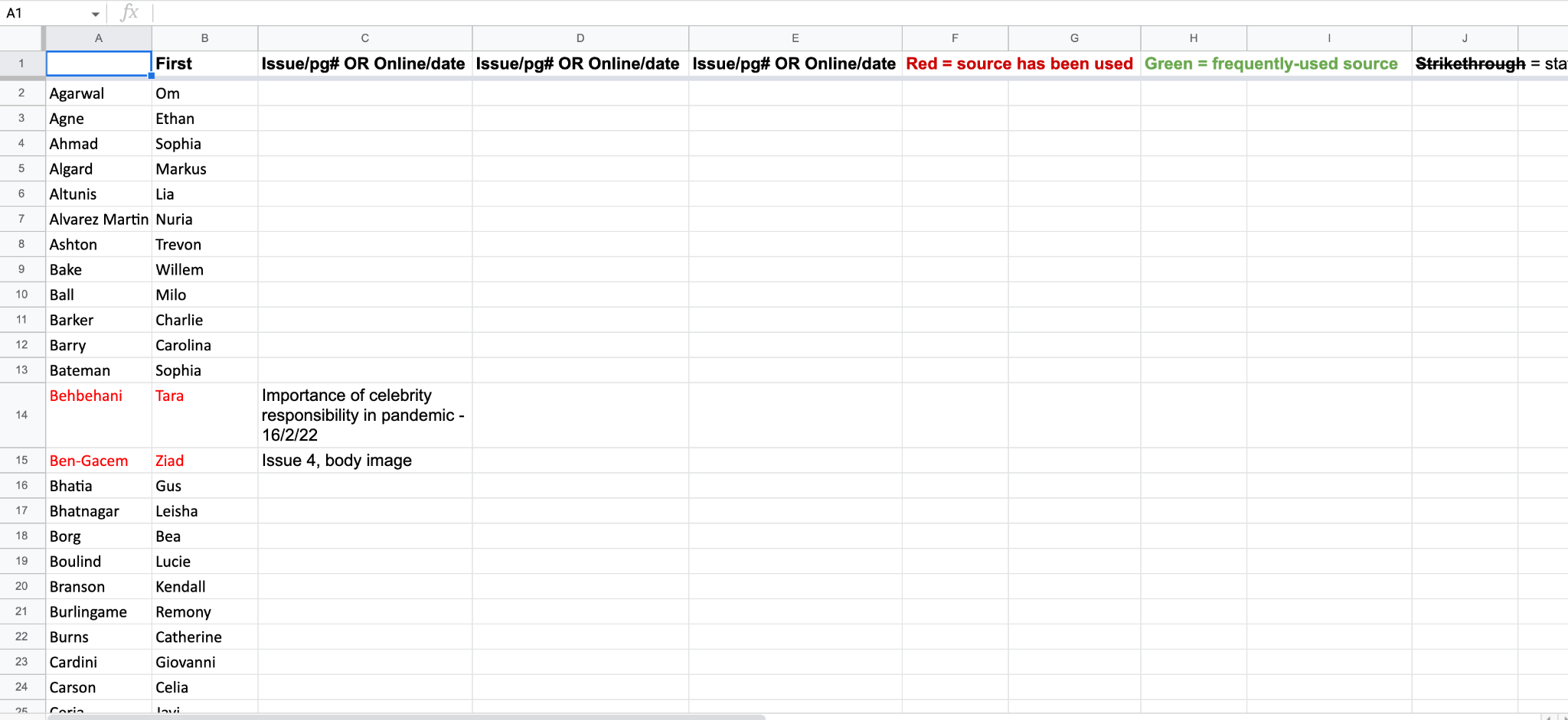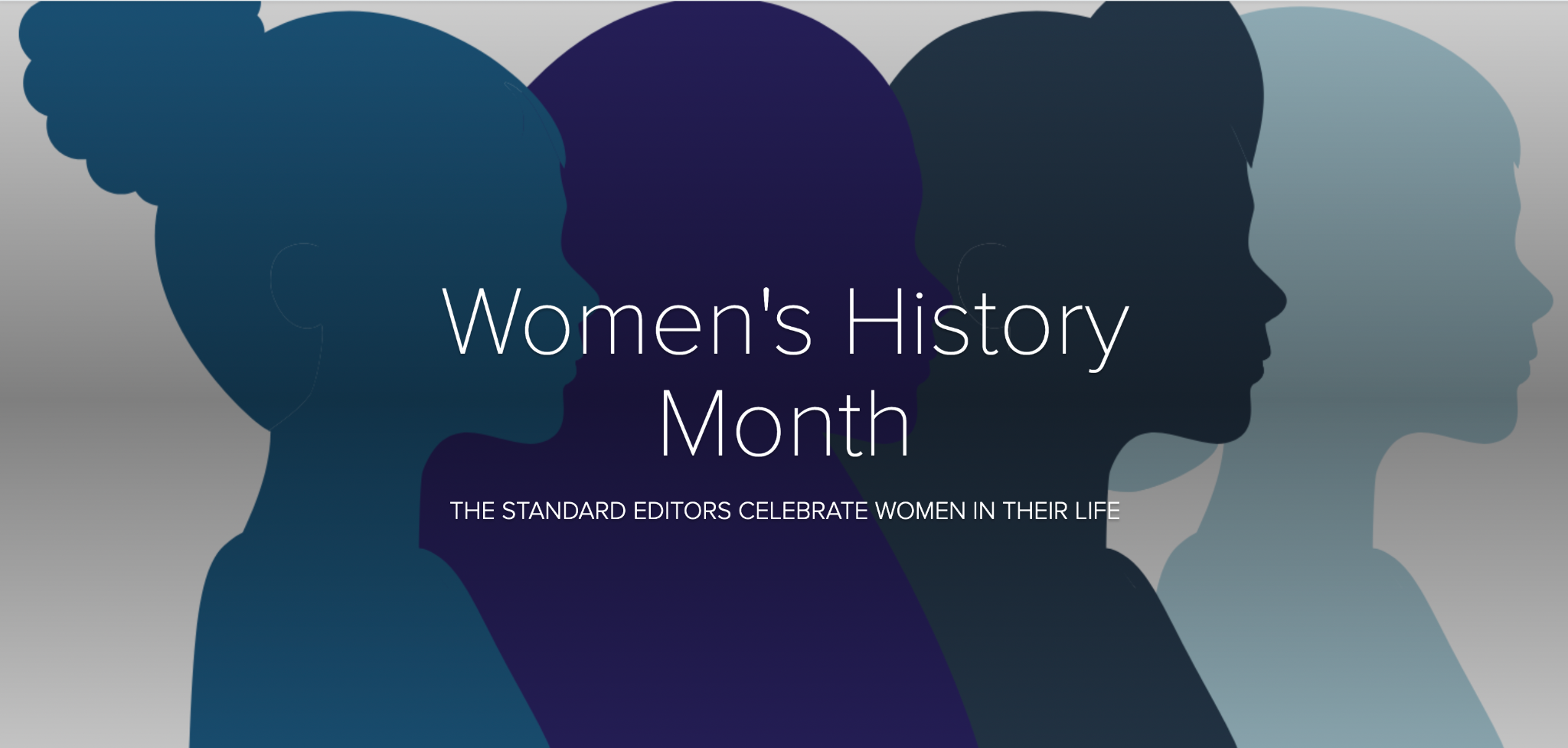

Diversity manifests itself in our staff, our content and our sources. Journalism simply can't achieve its purpose without providing a full range of voices in the community. As a leader, ensuring diversity has been a personal goal, both in my reporting and among my staff.
Beyond covering those who look different than me or subscribe to a very different philosophy, diversity holds the ability to push forward social justice in all its forms. This commitment is part of why I picked up that pen from the very beginning.
Every story I cover includes diversity in sources and perspectives. Recently, I reported on the implementation of changes in the school due to Ofsted requirements, which are regulations by which every school in the U.K. must abide. A highly contentious story with drastically different viewpoints in the community, I focused on representing both perspectives and ensuring my sources came from different backgrounds.
Alongside interviewing a member of administration, I interviewed a junior girl and a freshman boy. One strongly opposed the changes and the other spoke heavily in favor of them. Within the article, I ensured that I included quotes adequately expressing both of these perspectives. It was also important that I included sources from different grade levels with different experiences in the high school. Click the image to view the story:
When reporting on sexual harassment, it was crucial to dive into its intersectionality. I dedicated an entire section in the story to doing this, including quotes from a source who identifies as non-binary. They spoke about their experience with sexual harassment as part of a minority group, shifting attention to an issue seldom considered. Other sources – one a woman of color and another a health teacher – voiced concerns about other marginalized communities and how identity can exacerbate sexual harassment:
In an article about a letter the Social Justice Council wrote to the administration addressing racism within the school community, diversity was at the forefront of my mind. The article unpacked a controversial topic dealing with an entrenched social issue that must be confronted by everyone in my community. In my reporting, I ensured I included a variety of perspectives – both administrative and student-based – to provide a full picture of the issue and its impact. I cannot understate the importance of covering topics such as racism in The Standard. Without the school newspaper unearthing injustice, it is extremely difficult to begin to mitigate. Click the image below to read the full article:
Most recently, in my opinion article arguing for collective action combatting the climate crisis beyond Earth week, a significant portion of my article dived into the role of intersectionality in the climate crisis. Environmental racism and disproportional impacts of climate change on marginalized communities is seldom discussed, and dedicating three paragraphs in my piece to diving into research across these areas and offering tangible solutions to pave way for discussion was incredibly important to me. Click below to explore the piece:
In another opinion piece, I examined how standardized testing widens the divide between those with access to valuable resources. In the wake of college admissions' upheaval around COVID-19, it was imperative to rethink this previously accepted admissions practice that is hugely discriminatory:
This philosophy of giving voice to the underrepresented is one I carry in all of my reporting. Whether it be pedagogy changes or the death of Queen Elizabeth, I make it a priority to gather a range of perspectives and incorporate them fairly, accurately and proportionately in my work.
At the beginning of my time as Editor-in-Chief, I published our diversity statement. The statement outlined our commitment to diversity as a staff and how we vow to approach all of our work in this name. Click the image to view the statement on our website:
Because our commitment to diversity is integral to The Standard's work, we emailed the entire high school community announcing its release and linking to its location on the website.
Consistently utilizing the source list – a spreadsheet in which reporters cross off names of sources they have used for an article – is one practice that encourages source differentiation and reduced overlap. It's so easy for members of staff to interview people they know and shy away from topics disrupting the status quo.
As Editor-in-Chief, I seek to break this pattern and encourage my staff to dive deeply into topics with which they may be uncomfortable and continually remind reporters to interview a source we've never interviewed before to highlight voices not yet heard on our publication. When a source is interviewed once, their name is highlighted in red, and when someone is interviewed twice, their name is highlighted in green, and when they have been interviewed three times, their name is crossed out and they are placed on the rainbow list, meaning they are not to be interviewed again. To fully represent our community demographics and mitigate majority-voice domination, I have made that spreadsheet a habitual precedence.
Recently, I also introduced the rainbow list, which includes names of sources we use far too often. By ruling out those we seek out frequently, the staff is forced to platform voices that may have previously been underrepresented.
Within each section, I monitor diversity of content and of sources used. I’ve shared with my staff that we have a responsibility to include all kinds of voices in the content we publish, and each article should reflect the diversity of our community.
Within the culture section, in particular, I encouraged my Lead Culture Editor to create a tab on her section list monitoring the number of working stories falling into the commentary category versus community voice.
Within the features section, we have also increased our coverage around identity-based reporting. Below are a few features stories reflecting identity-based reporting:
Recently, I spearheaded a package celebrating Women's History Month. Each editor shared appreciation for a woman in their life, which culminated in a photo story on Adobe Express. This package emphasized the importance of this month for our community and spotlighted the various women in our lives.
Recruiting reporters from all across the school is crucial. The more diverse the newsroom, the better. To make the publication as strong as it can possibly be, it is so important to have a range of perspectives in the room with different identities, backgrounds and opinions. Thus, I've placed an emphasis on recruiting new members from the incoming freshman class along with those already in high school who are interested.
At the beginning of my time as EIC, I held a Q&A session for interested high schoolers to answer their questions about the publication and explain opportunities for involvement. I've also presented at open houses this year to encourage younger students to join.
During one editors class in September, I organized a staged debate with my DEIC: Online. The whole team watched us debate whether people should take naps after school. While it was a hugely trivial topic, it exemplified our commitment as a managing team to developing the courage to disagree. The more comfortable the staff feels openly expressing their opinions, the more diverse and inclusive our newsroom will be.
The mentor system I implemented also ensures that we embrace and cultivate the sharing of different opinions, backgrounds and identities. Each semester, editors are paired with a reporter to guide them in the inner workings of our publication. By forming meaningful connections with other editors, younger reporters are more likely to continue their work on the publication and feel more comfortable expressing their ideas openly. With our biggest staff yet – a jump from 30 members to 63 – it has been imperative to retain these young journalists, help them feel as though their opinions are highly valued and instill a desire to continue expanding the diversity of our publication.
To grow the conservation around diversity beyond our newsroom, myself and a few other editors have worked with our Director of Institutional Equity to host Dialogue Dinners, in which editors join in conversation with other student leaders about furthering diversity. This opens up doors for collaboration and helps us stay accountable for the diversity goals we set.
Of course, expanding diversity is an ongoing process, and I still have a ton of work to do. It can be tricky to avoid tokenizing underrepresented sources or treating this practice as a “checkbox” item. I’ve tried to adopt the mindset of treating diversity as the automatic way of reporting instead of a task one ought to complete. Amplifying the voices of those around me will be a mission I'll carry with me far beyond high school.
